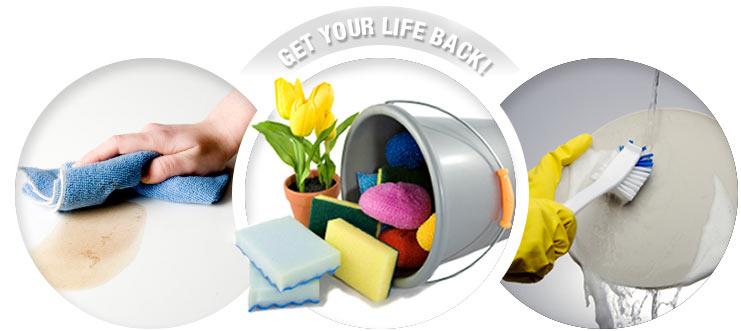Ives W. McGaffey is credited with inventing the vacuum cleaner. The brainchild of McGaffey was developed in a Chicago basement. The patent was obtained on June 5, 1869. He called it the "Whirlwind." It was a wood and canvas machine operated by hand.
In 1901 a civil engineer by the name of Hubert Cecil Booth of England invented and patented the first successful vacuum cleaner. Booth's machine was the first to use suction with a filter bag to clean carpets. Prior to his invention compressed air was used to blast dirt and dust away from the carpet. If used inside these machines would merely stir up the dust and eventually it would settle back down to where it had been.
Booth's vacuum cleaner was so big it was drawn by horses and had to be operated by four to six people. The large apparatus stayed outside the customer's home. The noise from the cleaner was so bad that it often scared horses passing by and Booth was often sued. This did not stop the success of his machines. In 1903 the well-to-do women of the day would throw vacuum cleaner parties. Guests would sip tea and lift their feet as uniformed attendants vacuumed the home. A visit would cost around four dollars.
The first "portable" electric vacuum was invented in 1905 by Chapman and Skinner in San Francisco. It weighed 92 pounds. Because of its size it did not sell well. In 1907 James Murray Spangler, a janitor in a Canton, Ohio department store, unhappy with the carpet sweeper he used on his job, was convinced it was the cause of his cough. Using spare parts - including an 18-inch fan motor, soapbox, broom handle, and a pillowcase - he developed quite a contraption. Spangler worked on his invention, improved it and received a patent in 1908, and formed the Electric Suction Sweeper Company. One of his first customers was his cousin, whose husband was William H. Hoover. Hoover actually bought the patent for the machine from Spangler. The Hoover model O weighed only forty pounds; it was the first to use both a cloth bag and attachments. Hoover developed positive agitation in 1926.
James Dyson introduced the Cyclone model 1000, the first bagless dual cyclone machine. Between 1978 and 1993 he built 5000 prototypes before he perfected his Dual Cyclone machine. In May of 2001 Dyson had 29% of the vacuum cleaner market by volume.
In April 2001 Eureka announced a robot vacuum cleaner. Since then several companies have marketed robot vacuum cleaners. Since 1869 the vacuum cleaner has evolved into advanced computerized machines. It takes a stretch of the imagination to think about what the future holds for these machines that are a vital part of cleaning professionally!
1858 Carpet sweepers were introduced in the United States; cleaning was done entirely by a rotating brush, which was activated by the wheels; there was no suction.
1869 Ives W. McGaffey obtained a patent for the first hand pumped vacuum cleaner in the United States. Developed in his basement in Chicago it was a contraption made of wood and canvas. It was known as the "whirlwind", manufactured and sold by the American Carpet Cleaning Company. It had suction, but did not have a brush roll.
1875 First cleaner developed that had both suction and a brush roll, utilized a hand crank for power to drive both the fan and the brush.
1901 Hubert Cecil Booth invents the first successful vacuum cleaner. It is the size of a milk float, operated by four to six people.
1905 The first portable electric vacuum invented by Chapman and Skinner in San Francisco. It weighed 92 pounds and used a fan 18 inches in diameter to produce suction. Because of its size it did not sell well.
1906 James Murray Spangler invents the first domestic single-operator upright vacuum cleaner.
1907 William Henry Hoover produces the first commercial bag-on-a stick upright vacuum cleaner.
1912-1915 Axel Wenner-Gren in Sweden collaborates with Lux to produce the first cylinder cleaner-Lux 1(later Electrolux).
1912 A vacuum cleaner nicknamed the "Grasshopper" was one of Jim Kirby's early designs. It was a non-electric cleaner design to serve households in rural areas.
1930's The first plastic vacuums hit the market and headlights were added to some of the fancier models.
1955 Re-useable paper bags first introduced.
1969 The first self propelled vacuums debuted.
1970 Hoover introduces carpet care control with height adjuster on upright cleaners.
1983 James Dyson introduces the "Cyclone" model 1000 cleaner, the first bagless dual cyclone machine.
2001 Prototype robotic cleaners for domestic use are introduced.
___________________________________________________________
Sources:
Discover.com
Ideafinder.com
Sciencemuseum.org.uk
Inventors.about.com
Tuesday, September 1, 2009
MOVIE NIGHT: Courtesy of MOP-n-Bucket Cleaning Service Vancouver
Apartment - House Cleaning Service - special offers:
Book regular cleaning service in the evenings or weekends and on your 4th clean you will receive a certificate for 2 Adult Admissions, 2 Regular Drinks, 1 Regular Popcorn.* No Cash Value - Minimum of Initial Cleaning Service + 4regular (weekly, bi-weekly, monthly) cleaning must be purchased. Initial Cleaning Service must be booked by May 30th, 2015
Just for Fun
MOP-n-BUCKET Apartment - House Cleaning Service
Tell A Friend Program*
You will receive $15off your next service for every friend you tell. So tell a friend to tell a friend how to experience more free time in their life!
*Initial Cleaning Service must be purchased.
Not Enough Time in Your Day? MOP-n-BUCKET Cleaning Service is just a TEXT Away! 604 * 724 * 4130
